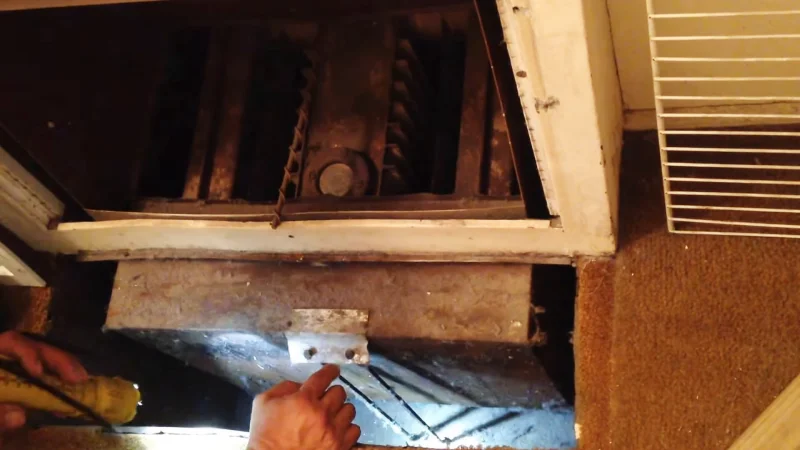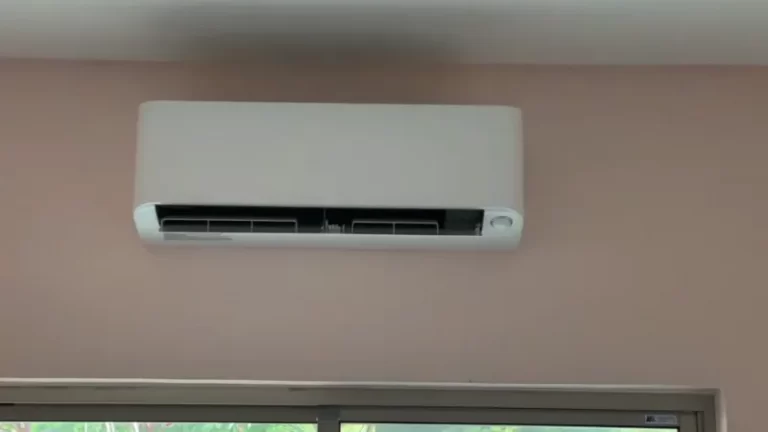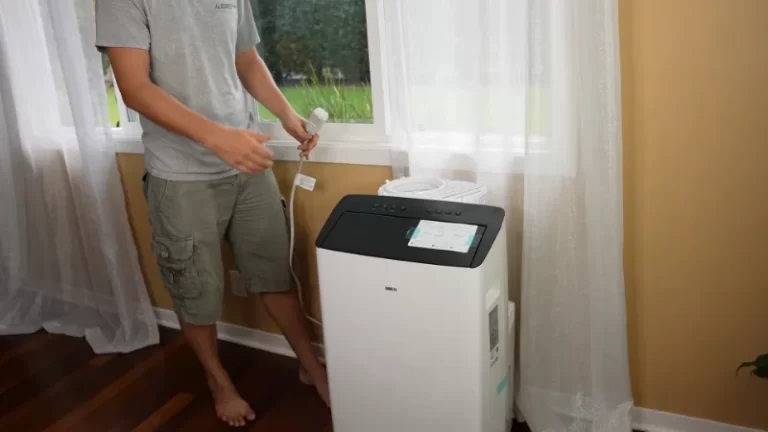1950s Floor Furnaces [Problems, Solutions]

Floor furnaces were a popular choice for home heating during the 1950s. They were efficient and could evenly distribute heat throughout a room. These furnaces were installed on the floor and had a grate on top. The grate allowed heat to circulate into the room.
Fueled by gas, they were operated by a thermostat. The thermostat controlled the temperature in the room. 1950s floor furnaces were a reliable and cost-effective option for homeowners. They kept homes warm and comfortable during the colder months.
You'll Learn About
1950s Floor Furnace
Floor furnaces were a common type of heating system in homes during the 1950s. These furnaces were typically installed on the floor of a room. They had a grate on top to allow heat to circulate into the room.
They were fueled by gas and operated by a thermostat. The thermostat controlled the temperature in the room. To start a 1950s floor furnace, the homeowner would typically follow a few steps:
- Make sure the thermostat is turned off. Ensure the burner and pilot levers are in the off position.
- Remove the glass lid covering the furnace. Locate the pilot light.
- Turn the pilot lever to the on position. Use a match or lighter to ignite the pilot light.
- Once the pilot light is lit, turn the burner lever to the on position.
- Set the desired temperature on the thermostat. Wait for the furnace to heat up.
It is important to regularly maintain a 1950s floor furnace. Clean it and inspect it for any issues. Neglecting maintenance can be a safety hazard. It can cause the furnace to malfunction and show error codes. It is recommended to have the furnace inspected and cleaned by a professional if it has not been done in a while.
How a 1950s Floor Furnace Works
A 1950s floor furnace is a type of gas-fired heating system. It is installed in the floor of a room. It consists of a metal box with a grate on top. The grate allows heat to circulate into the room. The furnace itself is located inside the box. It can be accessed by removing a round glass lid.
The furnace is operated by a thermostat. The thermostat is used to control the temperature in the room. It is typically located on a wall in the same room as the furnace. It can be used to set the desired temperature.
The furnace also has a pilot light. The pilot light is a small flame used to ignite the burners when the furnace is turned on. It is located inside the furnace. It can be accessed by removing the glass lid.
To ignite the pilot light, a match or lighter is used. The flame ignites the gas coming from the pilot light. Once the pilot light is lit, the burners can be turned on. Adjust the burner lever to the on position.
The burners will then heat the furnace’s heat exchanger. This heats the air circulated through the furnace and into the room.
Steps to Start a 1950s Floor Furnace
To safely start a 1950s floor furnace, follow these steps:
- Make sure the thermostat is turned off. Ensure the burner and pilot levers are in the off position. The thermostat should be turned to the lowest setting. The burner and pilot levers should be turned clockwise until they stop.
- Remove the glass lid covering the furnace. Locate the pilot light.
- Turn the pilot lever to the on position.
- Use a match or lighter to ignite the pilot light. Hold the flame near the pilot light. Wait for it to ignite.
- Once the pilot light is lit, turn the burner lever to the on position.
- Set the desired temperature on the thermostat.
- Wait for the furnace to heat up. It may take a few minutes for the furnace to reach the desired temperature.
It is important to follow these steps carefully. Ensure the thermostat, burner, and pilot levers are in the correct positions before attempting to start the furnace. Neglecting to do so could result in a malfunction or even a safety hazard.
Maintenance for a 1950s Floor Furnace
Maintaining a 1950s floor furnace is important. It ensures its continued safe and efficient operation. It is recommended to regularly clean and inspect the furnace. This prevents any issues from occurring. Neglecting maintenance can be a safety hazard. It can cause the furnace to malfunction.
To clean the furnace, start by removing the floor grate. Lift out the baffles that circulate air past the heat exchanger. It is common for dust, dirt, and cobwebs to accumulate in these areas. Use brushes and a vacuum cleaner to remove any debris. Inspect the furnace for any signs of wear or damage. Make any necessary repairs.
If you have not had your furnace inspected and cleaned in a while, it is recommended to have a professional do it. A professional will properly clean and inspect the furnace. They will ensure that it is in good working condition.
They may also identify any potential issues. They can make any necessary repairs. By having your furnace inspected and cleaned regularly, you can help extend its lifespan. It will keep the furnace running safely and efficiently.
Tips for Maintaining and Using a 1950s Floor Furnace
Here are a few additional tips for maintaining and using a 1950s floor furnace:
Keep the Area Around the Furnace Clear
Keep the area around the furnace clear of debris and flammable materials. It is important to keep the area clean and free of clutter. This prevents any accidents or fires.
Check the Fuel Lines and Connections Regularly
Make sure the fuel lines are in good condition. Ensure they are properly connected to the furnace. If you notice any leaks or other issues, have them repaired as soon as possible.
Use a Carbon Monoxide Detector
Carbon monoxide is a colorless, odorless gas. It can be produced by faulty furnaces. To protect yourself and your family, install a carbon monoxide detector in the same room as the furnace.
Replace the Furnace Filter Regularly
The furnace filter helps remove dust and other particles from the air. It is important to replace the filter regularly. This ensures the furnace operates efficiently and effectively.
Use a Programmable Thermostat
A programmable thermostat can help you save energy and money. It allows you to set the temperature in your home to match your schedule. You can set the temperature lower when you are not home. Set it higher when you are home. This reduces the amount of time the furnace is running.
Consider Upgrading to a More Efficient Furnace
If your 1950s floor furnace is showing its age, consider upgrading. If it is not operating as efficiently as it used to, consider a newer model. While this can be a significant investment, it can save you money on energy costs in the long run.
Upgrading to a modern heating system can improve safety and energy efficiency.
If you’re troubleshooting heating systems, it’s worth exploring whether a 3000w inverter can run your AC for backup power solutions. Additionally, understanding if a 2000-watt generator can power your AC can help you prepare for emergencies. For more tips, check out whether running an AC on an extension cord is safe.
Conclusion
1950s floor furnaces were a common and effective choice for home heating during that time period. These gas-fired heating systems were installed on the floor of a room. They had a grate on top to allow heat to circulate into the room.
They were operated by a thermostat. They had a pilot light that was used to ignite the burners when the furnace was turned on. To start a 1950s floor furnace, the homeowner would follow a few steps. Ensure the thermostat, burner, and pilot levers were in the off position. Ignite the pilot light. Adjust the thermostat to the desired temperature.
Proper maintenance is important. This includes regular cleaning and inspection. It ensures the continued safe and efficient operation of a 1950s floor furnace. We encourage readers to take care of their furnace. This ensures it operates safely and efficiently for years to come.


